- Clone
- BY88 (See other available formats)
- Regulatory Status
- RUO
- Workshop
- V BP173
- Other Names
- Ber-H2, Ki-1, TNFRSF8
- Isotype
- Mouse IgG1, κ
- Barcode Sequence
- TCAGGGTGTGCTGTA
- Ave. Rating
- Submit a Review
- Product Citations
- publications
| Cat # | Size | Price | Quantity Check Availability | Save | ||
|---|---|---|---|---|---|---|
| 333923 | 10 µg | $369 | ||||
CD30, also known as Ki-1 antigen, lymphoid activation antigen CD30, and tumor necrosis factor receptor superfamily member 8 is a type I transmembrane receptor that contains four TNF receptor domains with an approximate molecular weight of 64 kD. CD30 is highly expressed on Hodgkins and Reed-Sternberg cells as well as activated, but not resting, T and B cells. CD30 has been shown to interact with a number of proteins including TRAF1, TRAF2, TRAF3, TRAF5, NPM-ALK, TRAF-interacting protein, and CD30 ligand (CD153). Signaling through CD30 is thought to limit the proliferative potential of autoreactive CD8 effector T cells and protect against autoimmunity.
Product DetailsProduct Details
- Verified Reactivity
- Human
- Antibody Type
- Monoclonal
- Host Species
- Mouse
- Immunogen
- Recombinant human CD30 boosted with THP-1 cell line
- Formulation
- Phosphate-buffered solution, pH 7.2, containing 0.09% sodium azide and EDTA
- Preparation
- The antibody was purified by chromatography and conjugated with TotalSeq™-D oligomer under optimal conditions.
- Concentration
- 0.5 mg/mL
- Storage & Handling
- The antibody solution should be stored undiluted between 2°C and 8°C. Do not freeze.
- Application
-
PG - Quality tested
- Recommended Usage
-
Each lot of this antibody is quality control tested by immunofluorescent staining with flow cytometric analysis and the oligomer sequence is confirmed by sequencing. TotalSeq™-D antibodies are compatible with Mission Bio’s Tapestri Single-Cell Sequencing Platform for simultaneous detection of DNA and Protein.
To maximize performance, it is strongly recommended that the reagent be titrated for each application, and that you centrifuge the antibody dilution before adding to the cells at 14,000xg at 2 - 8°C for 10 minutes. Carefully pipette out the liquid avoiding the bottom of the tube and add to the cell suspension. For Proteogenomics analysis, the suggested starting amount of this reagent for titration is ≤ 1.0 µg per million cells in 100 µL volume. Refer to the corresponding TotalSeq™ protocol for specific staining instructions.
Buyer is solely responsible for determining whether Buyer has all intellectual property rights that are necessary for Buyer's intended uses of the BioLegend TotalSeq™ products. For example, for any technology platform Buyer uses with TotalSeq™, it is Buyer's sole responsibility to determine whether it has all necessary third party intellectual property rights to use that platform and TotalSeq™ with that platform. - Application Notes
-
Additional reported application: in combination with IL-2 and PMA to induce T cell clone proliferation.
- Additional Product Notes
-
TotalSeq™-D reagents are designed to profile protein expression at single cell level. The Mission Bio Tapestri platform and sequencer (e.g. Illumina analyzers) are required. Please contact technical support for more information, or visit biolegend.com/totalseq/single-cell-dna
The barcode flanking sequences are CGAGATGACTACGCTACTCATGG (PCR handle), and GAGCCGATCTAGTATCTCAGT*C*G (capture sequence). * indicates a phosphorothioated bond, to prevent nuclease degradation.
View more applications data for this product in our Application Technical Notes. -
Application References
(PubMed link indicates BioLegend citation) -
- Leca G, et al. 1994. Cell. Immunol. 156:230.
- RRID
-
AB_2904358 (BioLegend Cat. No. 333923)
Antigen Details
- Structure
- Type I transmembrane receptor and member of the TNF receptor superfamily that contains 4 TNF receptor domains; predicted molecular weight approximately 64 kD
- Distribution
-
Highly expressed on Hodgkins and Reed-Sternberg cells and activated, but not resting, T cells and B cells.
- Function
- Signaling through CD30 is thought to limit the proliferative potential of autoreactive CD8 effector T cells and protect against autoimmunity.
- Interaction
- TRAF1, TRAF2, TRAF3, TRAF5, NPM-ALK, TRAF-interacting protein, CD30 ligand (CD153)
- Ligand/Receptor
- CD30 Ligand (CD153)
- Cell Type
- B cells, Embryonic Stem Cells, Tregs
- Biology Area
- Immunology, Stem Cells
- Molecular Family
- CD Molecules
- Antigen References
-
1. Durkop H, et al. 1992. Cell 68:421.
2. Aizawa S, et al. 1997. J. Biol. Chem. 272:2042.
3. Stein H, et al. 1982. Int. J. Cancer 30:445. - Gene ID
- 943 View all products for this Gene ID
- UniProt
- View information about CD30 on UniProt.org
Related FAQs
Other Formats
View All CD30 Reagents Request Custom Conjugation| Description | Clone | Applications |
|---|---|---|
| Purified anti-human CD30 | BY88 | FC |
| FITC anti-human CD30 | BY88 | FC |
| PE anti-human CD30 | BY88 | FC |
| APC anti-human CD30 | BY88 | FC |
| PerCP/Cyanine5.5 anti-human CD30 | BY88 | ICFC |
| TotalSeq™-A0028 anti-human CD30 | BY88 | PG |
| APC/Fire™ 750 anti-human CD30 | BY88 | FC |
| PE/Cyanine7 anti-human CD30 | BY88 | FC |
| TotalSeq™-C0028 anti-human CD30 | BY88 | PG |
| TotalSeq™-B0028 anti-human CD30 | BY88 | PG |
| TotalSeq™-D0028 anti-human CD30 | BY88 | PG |
| APC anti-human CD30 | BY88 | FC |
| FITC anti-human CD30 | BY88 | FC |
| PE anti-human CD30 | BY88 | FC |
Compare Data Across All Formats
This data display is provided for general comparisons between formats.
Your actual data may vary due to variations in samples, target cells, instruments and their settings, staining conditions, and other factors.
If you need assistance with selecting the best format contact our expert technical support team.
-
Purified anti-human CD30
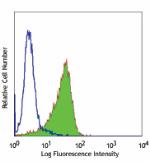
Human T lymphoma cell line Hut-78 stained with purified BY88... -
FITC anti-human CD30
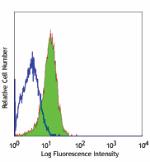
Human T lymphoma cell line Hut-78 stained with BY88 FITC -
PE anti-human CD30
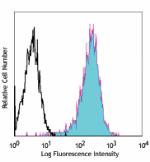
Human T lymphoma cell line Hut-78 stained with PE BY88 -
APC anti-human CD30

Human T lymphoma cell line Hut-78 stained with APC BY88 -
PerCP/Cyanine5.5 anti-human CD30
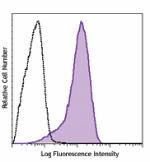
HuT-78 cells (Human T lymphoma cell line) were stained with ... -
TotalSeq™-A0028 anti-human CD30
-
APC/Fire™ 750 anti-human CD30
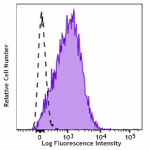
HuT-78 cells (Human T lymphoma cell line) were stained with ... -
PE/Cyanine7 anti-human CD30
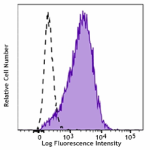
HuT-78 cells (Human T lymphoma cell line) were stained with ... -
TotalSeq™-C0028 anti-human CD30
-
TotalSeq™-B0028 anti-human CD30
-
TotalSeq™-D0028 anti-human CD30
-
APC anti-human CD30
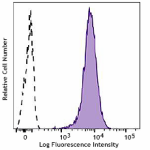
Typical results from HDLM-2 cells (a human lymphoma cell lin... -
FITC anti-human CD30

Typical results from HDLM-2 cells (a human lymphoma cell lin... -
PE anti-human CD30

Typical results from HDLM-2 cells (a human lymphoma cell lin...
 Login/Register
Login/Register 













Follow Us